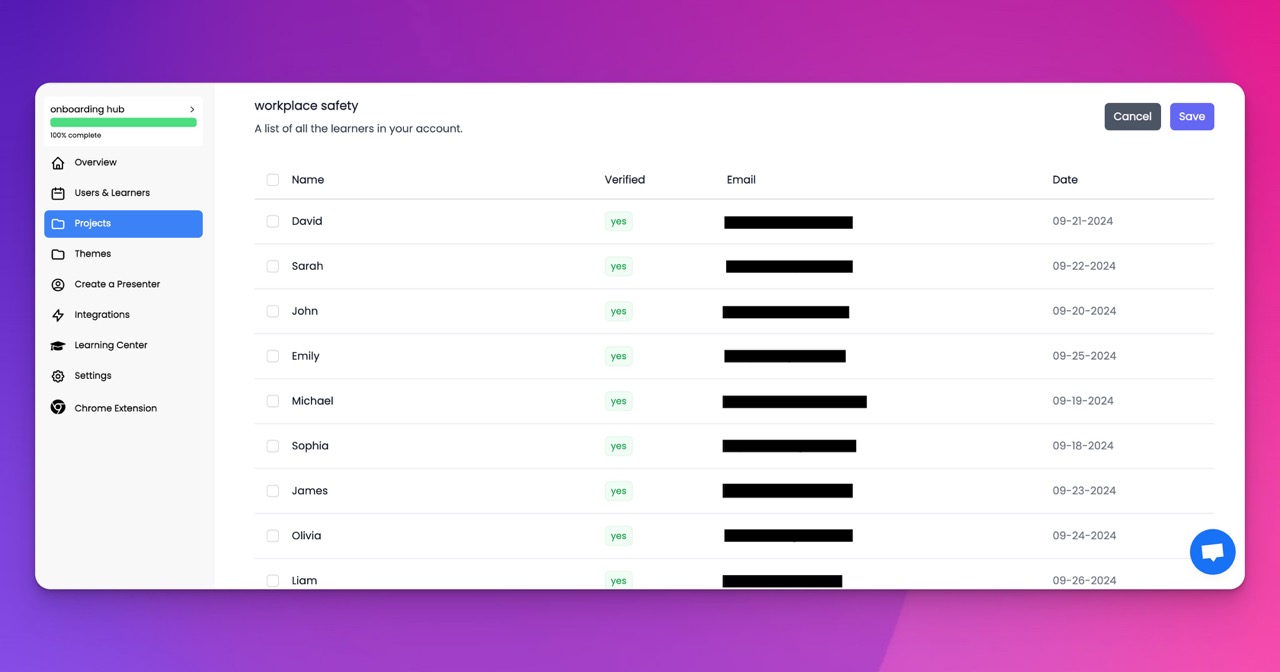🎉 Trainday now integrates with Zendesk and Hubspot 🎉 Trainday now integrates with Zendesk and Hubspot 🎉 Trainday now integrates with Zendesk and Hubspot
🎉 Trainday now integrates with Zendesk and Hubspot
🎉 Trainday now integrates with Zendesk and Hubspot
Contact
Building a Safer Warehouse Environment Through Comprehensive Onboarding
In the bustling and often hazardous world of warehouse operations, establishing a culture of safety starts the moment a new employee walks through the door. "Building a Safer Warehouse Environment Through Comprehensive Onboarding" underscores the vital role that thorough onboarding plays in minimizing risks and fostering a workplace where safety is paramount. This blog post explores how well-designed onboarding programs equip new hires with the necessary tools, knowledge, and behaviors to operate safely and efficiently, ensuring that safety standards are not just met but ingrained as a fundamental part of the workplace culture.
Core Elements of Safety-Focused Onboarding
Effective onboarding in a warehouse setting goes beyond simple orientations; it involves a series of strategic training sessions and activities designed to prioritize safety from day one.
In-Depth Safety Training
The foundation of any onboarding program in a warehouse should be comprehensive safety training. This includes detailed instructions on the proper use of machinery and equipment, adherence to safety regulations, and the correct handling of materials, especially hazardous ones. Utilizing multimedia presentations, hands-on demonstrations, and interactive quizzes can enhance engagement and retention of critical safety information.
Emergency Preparedness
Equipping new hires with the knowledge to handle emergencies is crucial. Onboarding must cover emergency procedures such as evacuation routes, the use of fire extinguishers, and first-aid measures. Regular drills should be integrated into the onboarding process to ensure that emergency protocols become second nature to the new employees.
Incorporating Technology for Enhanced Learning
Leveraging modern technology can significantly boost the effectiveness of onboarding programs, particularly when it comes to safety training.
Virtual Reality (VR) Training
VR technology offers new hires the opportunity to immerse themselves in realistic workplace scenarios without the associated risks. Through VR, employees can practice navigating complex warehouse layouts, using heavy machinery, and responding to simulated emergency situations, all within a controlled environment.
Digital Learning Platforms
Digital platforms can provide new hires access to onboarding materials at any time, which is particularly beneficial for reinforcing learning points or accommodating different learning speeds. These platforms also allow for tracking learning progress and assessing understanding through digital assessments, ensuring that all safety protocols are thoroughly understood.
Cultivating a Safety-First Culture
Beyond individual training sessions, onboarding should focus on building a safety-first culture that influences every action employees take within the warehouse.
Mentorship and Peer Learning
Assigning experienced mentors to new hires can facilitate the transmission of safety values and practices. Mentors serve as role models, demonstrating daily safety behaviors and providing guidance and feedback to reinforce safety standards.
Continuous Safety Dialogue
Encouraging ongoing discussions about safety, including regular safety meetings and open forums where employees can share concerns and suggestions, reinforces the importance of safety and keeps it at the forefront of warehouse operations.
Assessing Onboarding Effectiveness
To ensure the onboarding process continuously improves and adapts to new safety challenges, regular assessment and feedback are necessary.
Safety Performance Metrics
Tracking specific safety metrics such as accident rates, near-misses, and safety violations before and after implementing new onboarding initiatives provides clear indicators of program effectiveness. Improvements in these metrics can validate the impact of the onboarding program.
Feedback Surveys
Conducting regular surveys with new hires can provide insights into their perceptions of the safety training they received. This feedback is invaluable for identifying areas where the onboarding process may need adjustments or enhancements.
Conclusion
"Building a Safer Warehouse Environment Through Comprehensive Onboarding" highlights the critical impact of onboarding on maintaining a safe warehouse. By investing in detailed, technology-enhanced safety training and fostering a culture that prioritizes safety at every level, warehouses can significantly reduce workplace hazards and ensure that all employees are not only aware of the safety protocols but are also committed to adhering to them. This approach not only protects employees but also promotes efficiency and productivity by creating a stable and secure work environment.
Accelerate Compliance.
Deliver OSHA-Ready Courses Instantly.
Empower your team with data-driven training solutions tailored to your industry's safety standards. Stay compliant, reduce risks, and boost productivity with AI-powered course creation.
